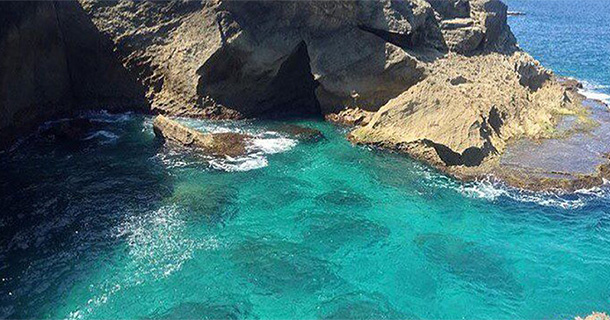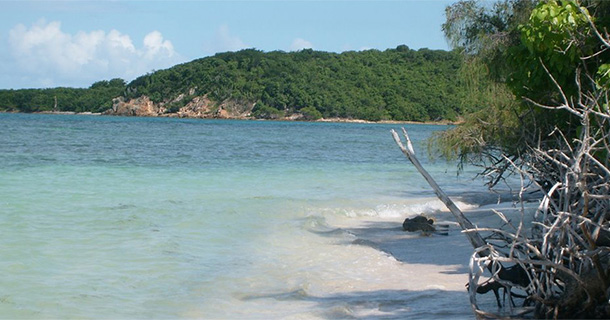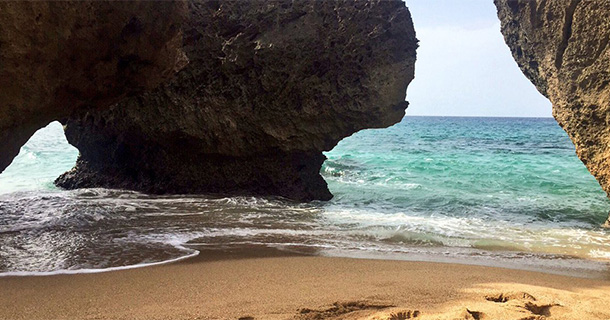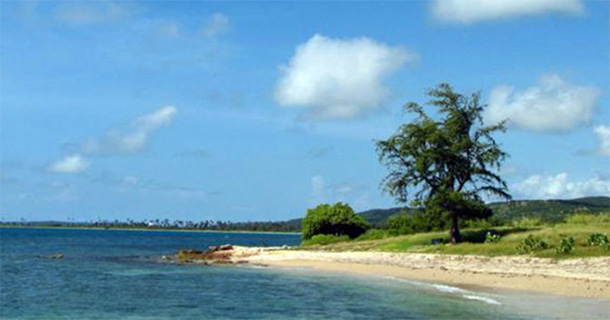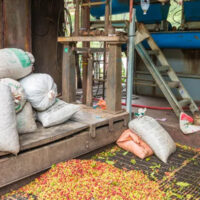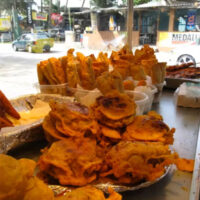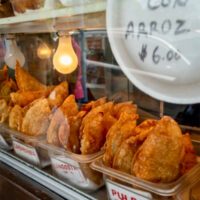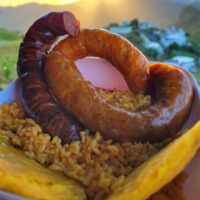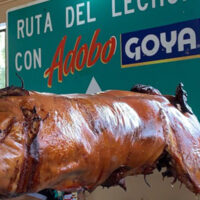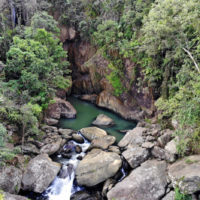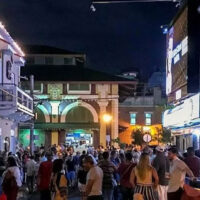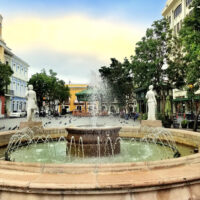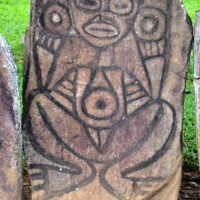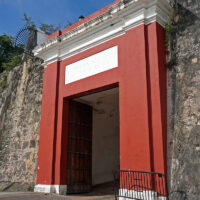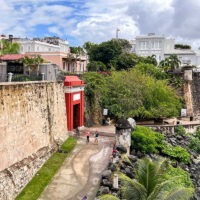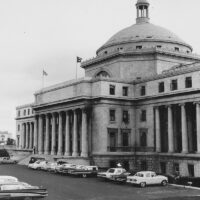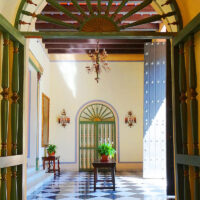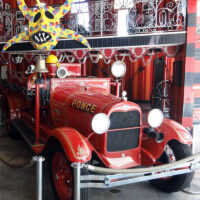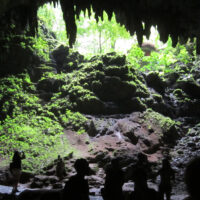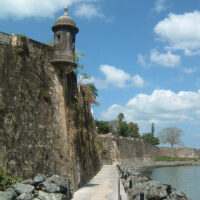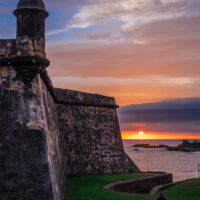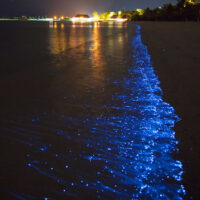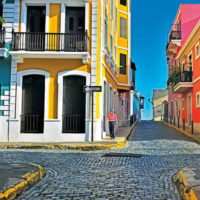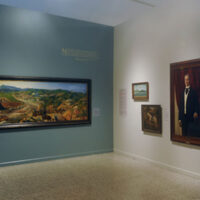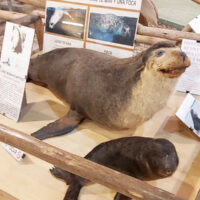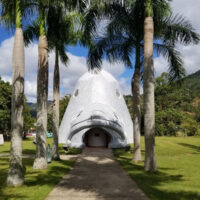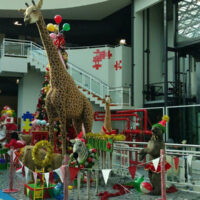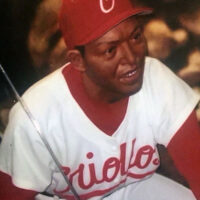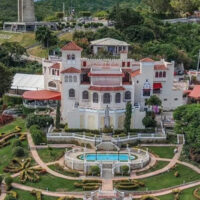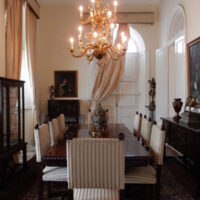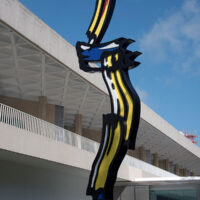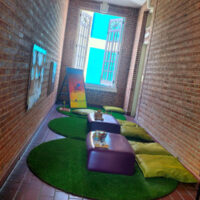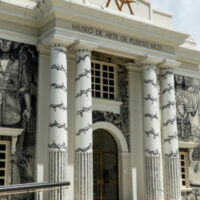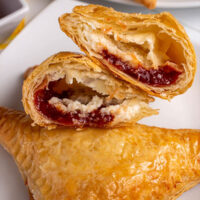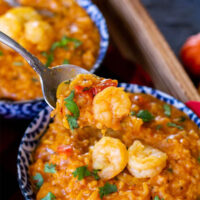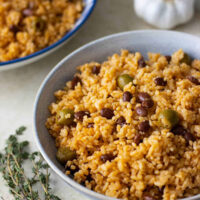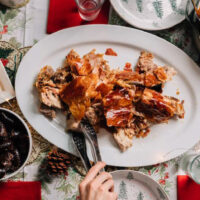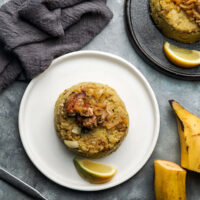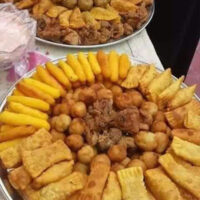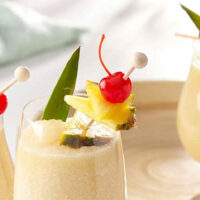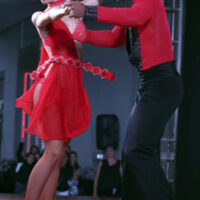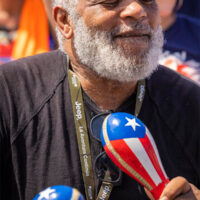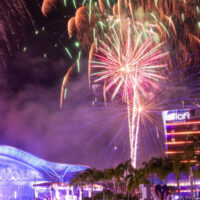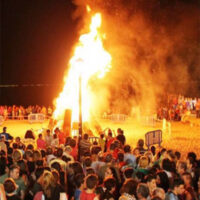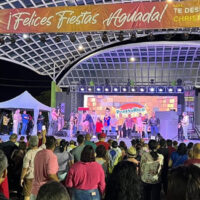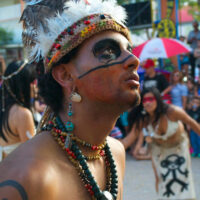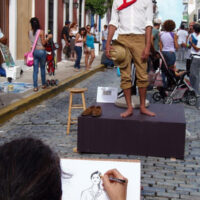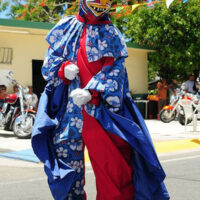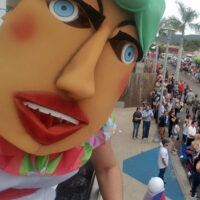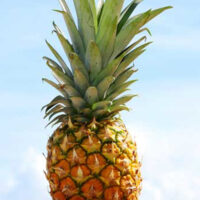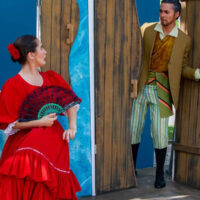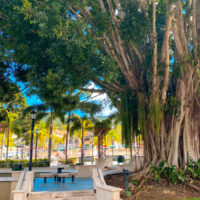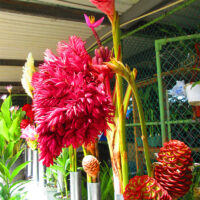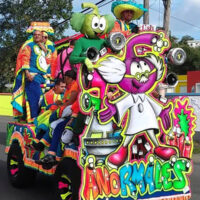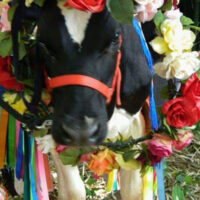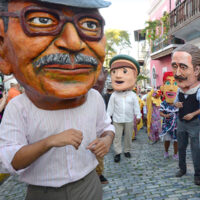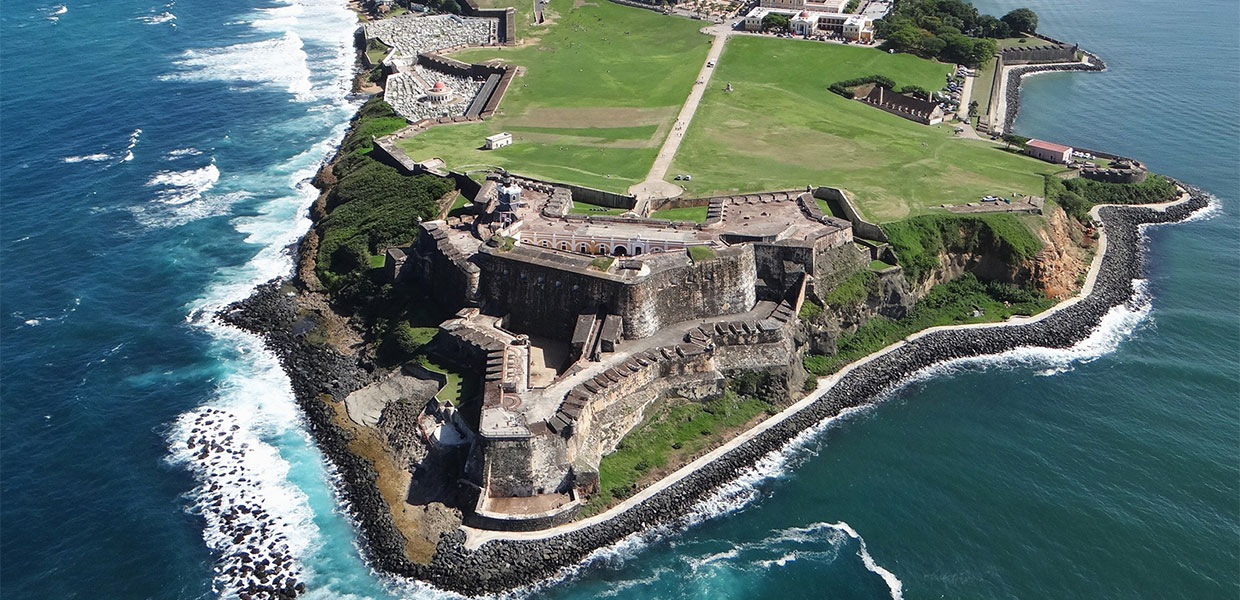
Puerto Rico
The Island of Enchantment
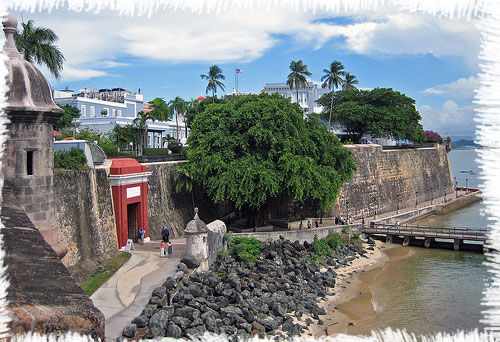 Puerto Rico, affectionately known as “The Island of Enchantment” and “The Pearl of the Caribbean,” is an unincorporated territory of the United States located in the eastern Caribbean, between the Atlantic Ocean and the Caribbean Sea. With an area of 8,870 km² and an estimated population of 3.24 million (U.S. Census, 2025), the island stands out for its history, vibrant culture, and extraordinary biodiversity, making it a unique and captivating destination.
Puerto Rico, affectionately known as “The Island of Enchantment” and “The Pearl of the Caribbean,” is an unincorporated territory of the United States located in the eastern Caribbean, between the Atlantic Ocean and the Caribbean Sea. With an area of 8,870 km² and an estimated population of 3.24 million (U.S. Census, 2025), the island stands out for its history, vibrant culture, and extraordinary biodiversity, making it a unique and captivating destination.
The capital, San Juan, is the historical and cultural heart of Puerto Rico. Its famous Old San Juan, with cobblestone streets and colonial buildings, is home to iconic landmarks such as Castillo San Felipe del Morro, Castillo San Cristóbal, and La Fortaleza, one of the oldest government complexes still in use in the Western Hemisphere.
Beyond the capital, the island features vibrant cities such as Ponce, Mayagüez, Caguas, and Arecibo, each with its own character, traditions, and natural attractions. Puerto Rico’s geography offers a surprising diversity, including:
- Tropical forests, such as El Yunque
- Turquoise-water beaches along the entire coast
- Fertile valleys, mountains, and mountain ranges
- Caves and caverns, such as those in Río Camuy
- Bioluminescent bays in Vieques, Fajardo, and Lajas
The island’s fauna and flora include endemic and emblematic species such as the coquí, the Puerto Rican boa, and the Puerto Rican woodpecker, as well as a wide variety of tropical plants. Puerto Rico blends nature, history, culture, and hospitality, offering every visitor an unforgettable experience.
Tourism and Activities in Puerto Rico
Puerto Rico is one of the most complete and attractive tourist destinations in the Caribbean. The island combines spectacular beaches, colonial history, lush nature, and a vibrant cultural life, offering unforgettable experiences for all types of visitors. Whether you are seeking relaxation, adventure, gastronomy, ecotourism, or culture, you will find activities that capture the essence of the island.
Main Attractions
Some of the most popular attractions include:
- Historic districts: such as Old San Juan, with colonial architecture and museums.
- Bioluminescent bays: unique experiences in Vieques, Fajardo, and Lajas.
- Nature trails: ecotourism routes in El Yunque National Forest and other reserves.
- Gastronomic routes: exploration of local flavors in markets and traditional restaurants.
- Nautical excursions: trips to Culebra, Vieques, Icacos, and other paradise keys of the archipelago.
In addition, the island offers water sports (snorkeling, diving, kayaking, surfing), ziplining, river and cave exploration, as well as cultural tours, museums, and traditional festivals. Tourism in Puerto Rico stands out for its accessibility, modern infrastructure, and the warmth of its people, making every experience welcoming and memorable.
Beaches of Puerto Rico
Coasts of Puerto Rico
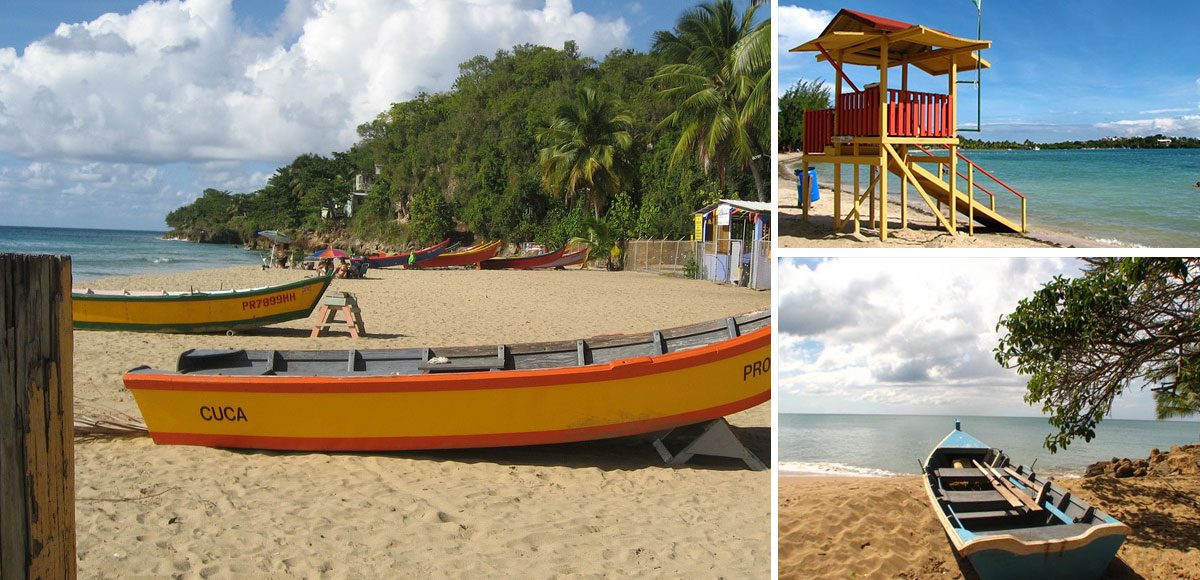
Puerto Rico is world-renowned for the beauty of its beaches. With over 270 miles of coastline and approximately 231 officially registered beaches, the island offers a wide variety of coastal landscapes: from tranquil turquoise bays to beaches with perfect waves for surfing. Its warm year-round climate makes these coasts ideal destinations for relaxation, water sports, or enjoying unforgettable sunsets.
Among the most notable coastal attractions are internationally recognized beaches such as Flamenco in Culebra, Crash Boat in Aguadilla, Playa Buyé in Cabo Rojo, Luquillo, and Playa Jobos in Isabela, among many others. Each coast of the archipelago has its own charm and character, offering options for all tastes and ages.
To explore further, visit our Beaches by Coast, where you will find a complete list of beaches organized by region:
Gastronomic Routes and Culinary Adventures
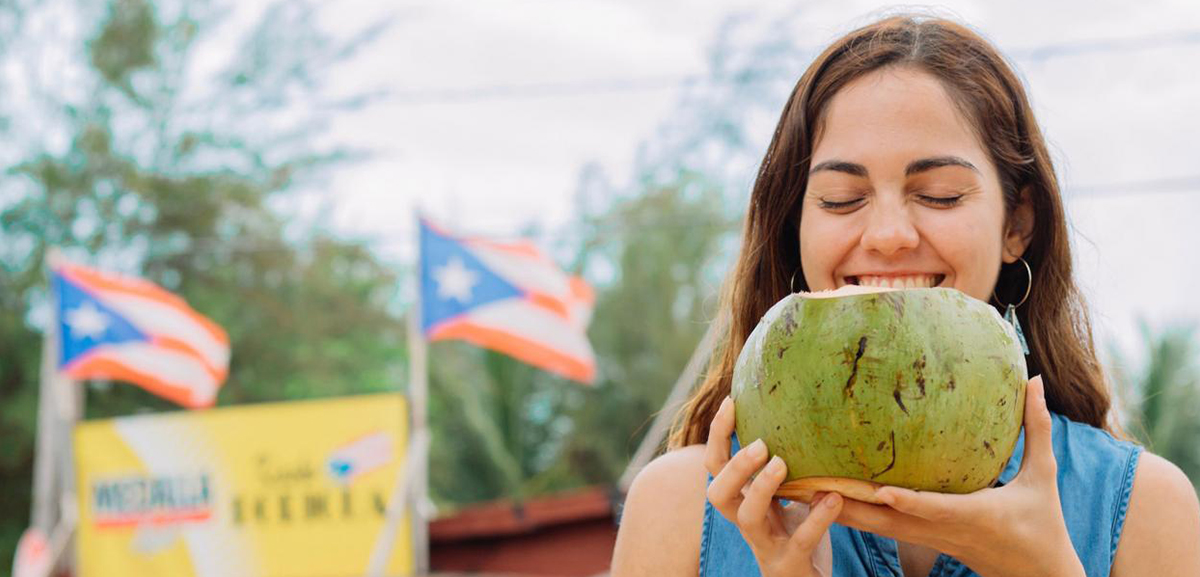
Puerto Rico is a true culinary treasure, celebrated for its vibrant, diverse, and historically rich cuisine. Puerto Rican flavors are born from a unique fusion of Taíno, Spanish, and African heritage, enriched with modern influences that have positioned the island as one of the Caribbean’s most appealing culinary destinations. From traditional dishes like mofongo and lechón a la vara to contemporary creations that reinvent Boricua flavors, each culinary experience reflects the soul and creativity of the Puerto Rican people.
Gastronomic routes have become one of the best ways to experience Puerto Rico beyond its landscapes. Through these routes, you can explore towns, interact with locals, discover traditional practices, and enjoy iconic dishes in authentic settings full of flavor and hospitality. One of the most popular experiences is chinchorreo, a cherished tradition that involves visiting various chinchorros, kiosks, and local restaurants to sample typical dishes and drinks, often accompanied by music and a festive atmosphere.
Puerto Rico Food Trails and Culinary Adventures
Exploring these routes not only delights the palate but also strengthens the connection with the history, culture, and traditions that define Puerto Rico. Each stop is an opportunity to discover authentic flavors, vibrant communities, and the culinary passion that sets the Boricua people apart.
Historic Sites and Landmarks in Puerto Rico
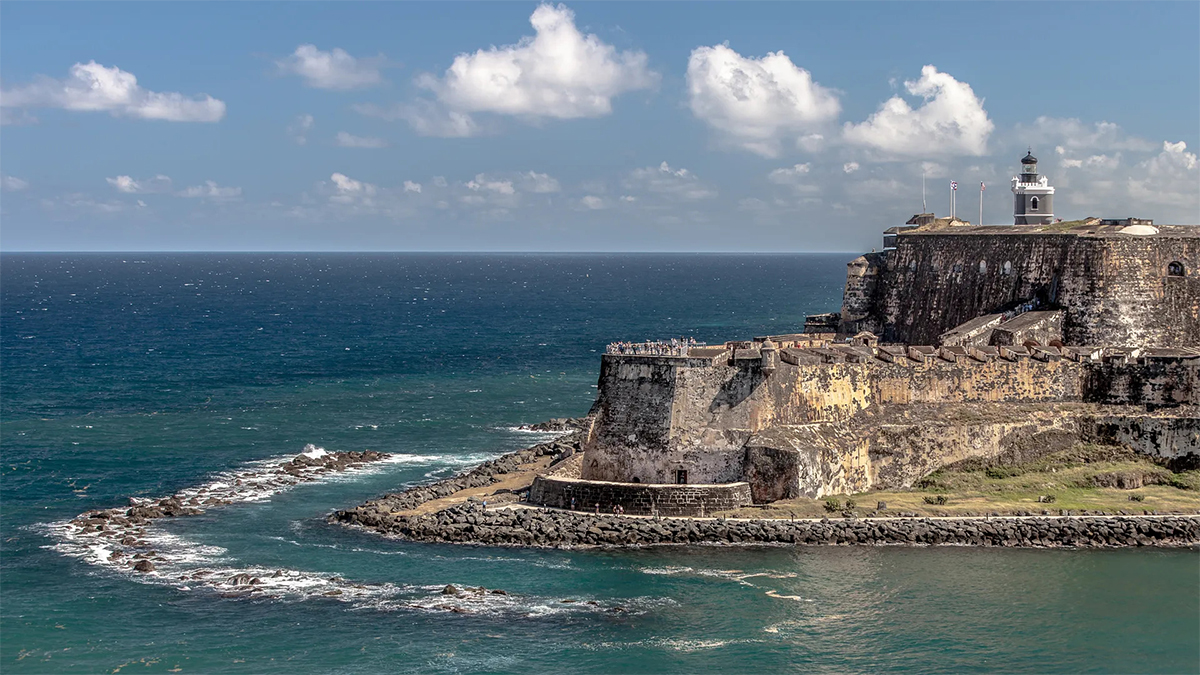
Puerto Rico is an island with extraordinary historical richness, where Taíno, African, and Spanish heritages converge to shape its cultural identity. Its archaeological, architectural, and natural value is reflected in numerous historic sites recognized both locally and internationally, including National Historic Landmarks and one UNESCO World Heritage Site.
Through these sites, you can journey across centuries of living history, admire impressive fortifications, visit indigenous ceremonial parks, explore colonial towns, and discover natural wonders that are an essential part of Puerto Rico’s legacy.
Whether you are a history enthusiast, an architecture lover, or simply wish to experience the cultural essence of the island, Puerto Rico offers unique experiences that combine learning, scenic beauty, and an invaluable sense of identity.
Popular Historical Sites and Landmarks in Puerto Rico
These sites allow you to understand the historical, cultural, and architectural evolution of Puerto Rico. Each location tells a fundamental part of the island’s story, offering memorable experiences that blend history, nature, and tradition.
Museums in Puerto Rico
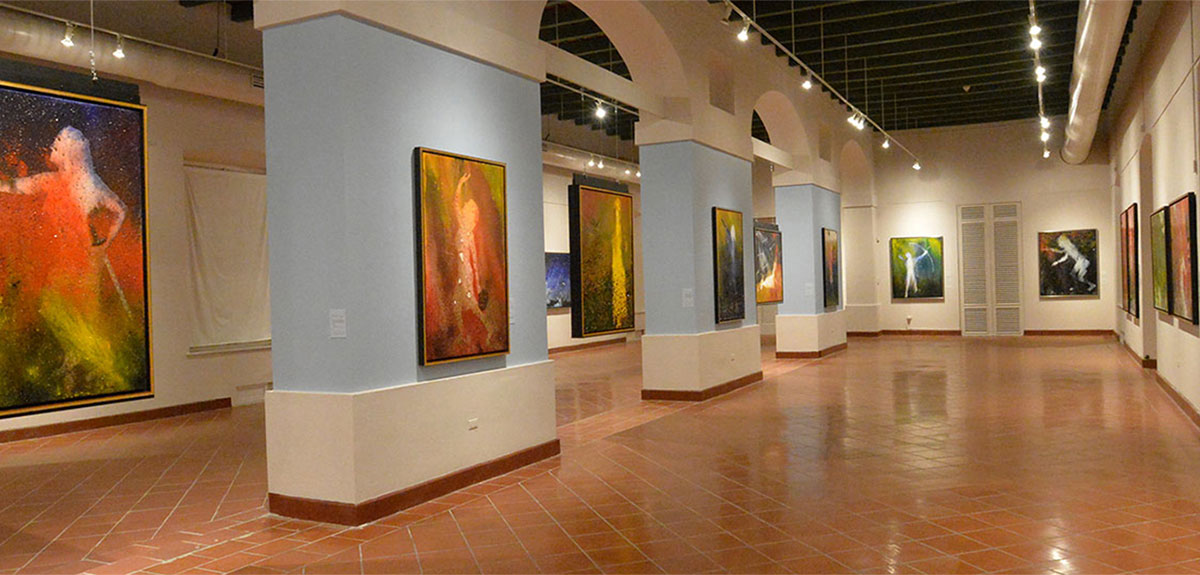
Puerto Rico is an extraordinary destination for those who enjoy art, history, and culture. Beyond its beaches and natural landscapes, the island is home to nearly 80 museums covering classical and contemporary art, natural history, indigenous heritage, architecture, music, sports, and interactive experiences for the whole family.
Each museum offers a unique perspective on Puerto Rican identity, allowing visitors to explore the past, understand the present, and appreciate the creativity of its artists. These spaces also serve as cultural hubs, with educational programs, temporary exhibitions, and events that promote access to art and knowledge.
Popular Museums in Puerto Rico
Visiting these museums allows you to discover Puerto Rico’s history, creativity, and identity in a deep and enriching way. Each visit offers the opportunity to appreciate the island’s cultural evolution while enjoying educational, visually memorable, and culturally meaningful experiences.
Culture and Heritage
Puerto Rico is a true cultural melting pot where Taíno, African, Spanish, and modern American influences converge. This fusion has shaped a vibrant, diverse identity deeply rooted in Boricua pride. The island’s culture is reflected in its music, dance, cuisine, language, festivals, and artistic expressions, creating a unique blend that sets Puerto Rico apart in the Caribbean.
Traditions and Cultural Roots
- Taíno heritage: Present in names, crafts, cuisine, and customs.
- African influence: Emblematic rhythms such as bomba and plena.
- Spanish heritage: Colonial architecture, religion, and language.
- Contemporary American influence: Modern lifestyle, education, and popular culture.
The combination of these roots makes Puerto Rico a culturally rich, authentic, and historically vibrant destination, where every tradition and artistic expression tells the story of its people.
Puerto Rican Cuisine and Drinks
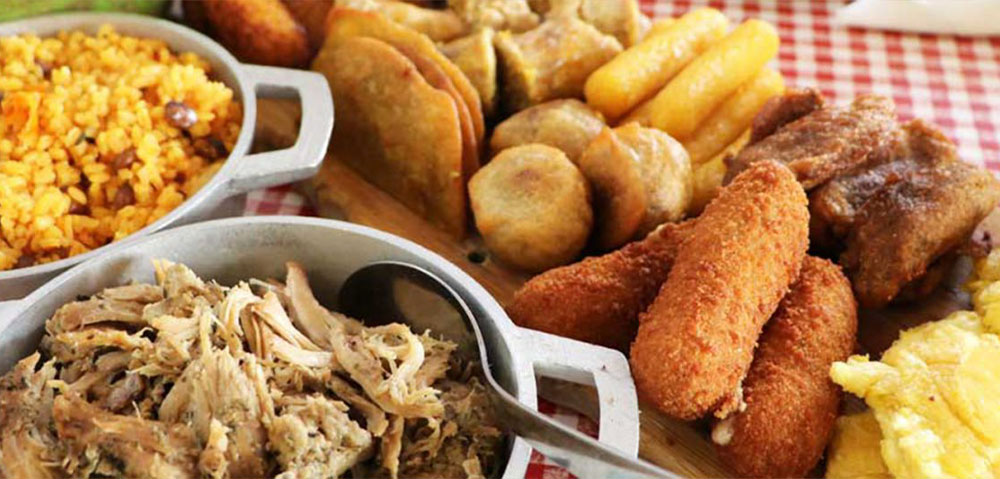
Puerto Rican cuisine, also known as criollo cuisine, combines Taíno, Spanish, and African influences, resulting in flavors rich in tradition, color, and creativity. Essential ingredients such as rice, pigeon peas, plantains, sweet potatoes, yucca, corn, seafood, and pork are seasoned with sofrito, garlic, adobo, and local herbs, creating iconic dishes that reflect the essence of the Boricua palate.
Typical beverages complement this culinary richness. Rum, a Caribbean and Puerto Rican pride, is the base for world-renowned cocktails like the Piña Colada, which has been declared the national cocktail. Refreshing alternatives include coconut water, natural juices, and traditional drinks such as coquito, very popular during Christmas.
Popular Puerto Rican Dishes and Beverages
Iconic Dishes
- Mofongo: Mashed green plantains, traditionally stuffed with meat, seafood, or vegetables. It is one of the island’s most representative dishes.
- Arroz con gandules: A classic dish for Christmas and family gatherings, made with rice, pigeon peas, sofrito, and spices.
- Lechón asado: Slow-roasted pork prepared in the Boricua style, especially popular during festivities and along the famous Ruta del Lechón in Guavate.
- Sancocho: A hearty stew made with meats, root vegetables, and other vegetables. It symbolizes community and family togetherness.
- Tostones and alcapurrias: Iconic Puerto Rican street foods, beloved by both locals and visitors.
Exploring Puerto Rico’s cuisine and beverages is a journey into intense flavors and deeply rooted cultural traditions. Each dish and drink tells a story, making the island’s gastronomy an unforgettable cultural experience.
For food enthusiasts, culinary routes and chinchorreo are highly recommended, offering the chance to visit kiosks, chinchorros, and local restaurants while discovering the history, culture, and gastronomic passion that define the Boricua people.
Annual Festivals in Puerto Rico
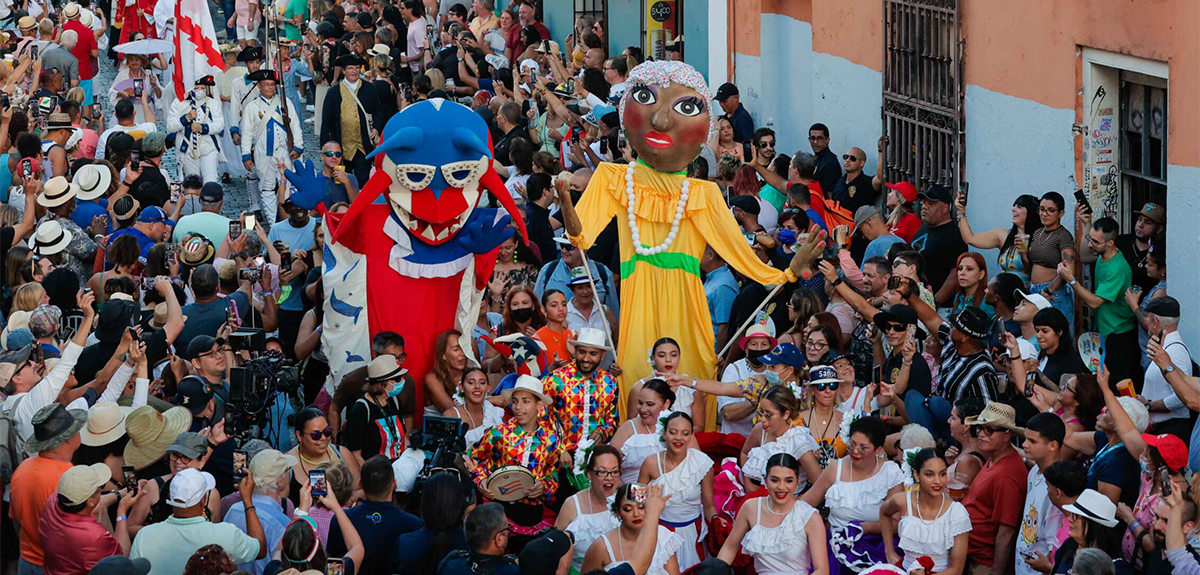
Puerto Rico is renowned for its cultural energy and celebrations that reflect the history, spirituality, and joy of its people. Throughout the year, the island hosts religious, musical, gastronomic, and community festivals that attract both local and international visitors. These events not only honor Puerto Rican heritage but also strengthen the cultural identity and traditions of each region.
Most Notable Festivals
These festivals offer authentic cultural experiences, combining music, gastronomy, spirituality, and tradition, and provide a unique opportunity to immerse yourself in the essence of Puerto Rico.
Music and Cultural Experience
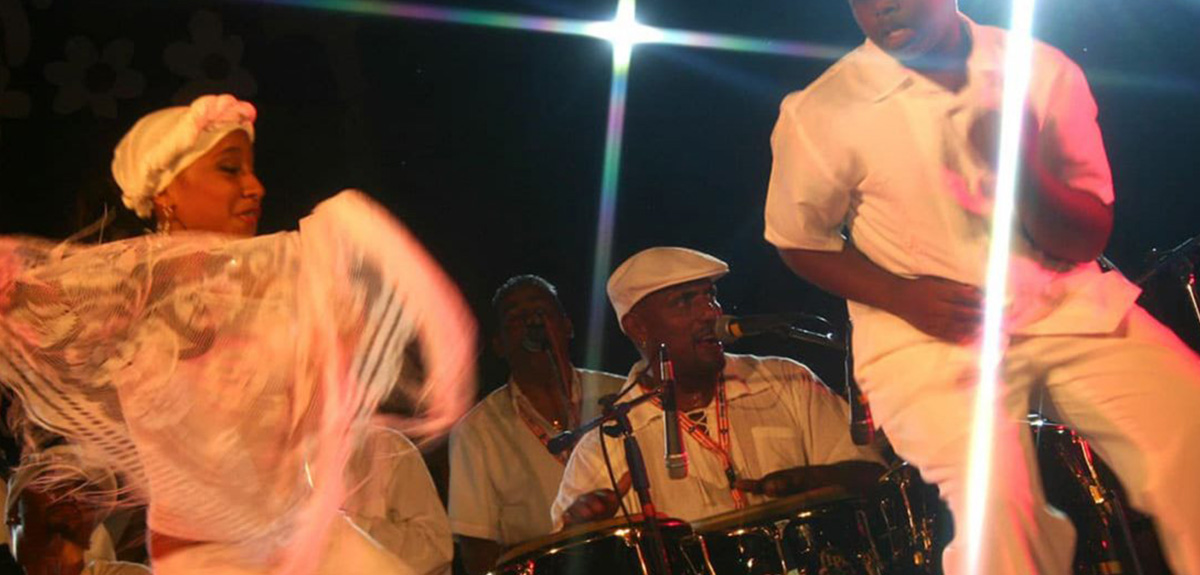
Music is one of the most important pillars of Puerto Rican identity. Through its rhythms, the island connects generations, expresses collective emotions, and shares its history with the world. Puerto Rico is the birthplace of musical genres that have transcended borders and continue to shape everyday life.
Puerto Rican music spans a variety of genres, each with its own rich history and cultural significance. Here are some of the key styles that define the island’s dynamic musical landscape:
Notable Musical Genres
Each genre offers a window into the soul of Puerto Rico, and its music can be heard in town squares, festivals, patron saint celebrations, and community performances, showcasing the pride and passion of its people.
Arts and Cultural Heritage
Puerto Rico has an extraordinary artistic heritage that encompasses visual arts, literature, theater, cinema, and architecture. Through these expressions, the island celebrates its history, traditions, and cultural evolution. Museums, galleries, and cultural centers, both public and private, preserve and promote local talent.
Some of the most recognized spaces include:
- Puerto Rico Museum of Art (MAPR) in Santurce
- Museum of Contemporary Art (MAC) in San Juan
- Ponce Museum of Art, internationally renowned for its European and Caribbean art collection
Puerto Rican architecture also reflects the island’s historical evolution, from colonial fortifications like El Morro and San Cristóbal to Creole residences, coffee plantations, and modern 20th-century works. Each building tells a story about Puerto Rico’s social, political, and cultural transformation.
Literature and the performing arts are equally essential. Authors such as René Marqués, Julia de Burgos, Luis Palés Matos, and contemporary writers have left an invaluable literary legacy. Institutions like the Luis A. Ferré Fine Arts Center promote theatrical productions that explore historical, social, and cultural themes, strengthening cultural identity and pride.
People and Identity
Puerto Rican identity is characterized by resilience, cultural diversity, and the deep pride its people feel for their history and traditions. Taíno, African, and Spanish roots, combined with modern American influences, have shaped a unique identity reflected in music, language, customs, cuisine, and daily life.
A strong sense of community and solidarity is one of the most distinctive traits of the Puerto Rican people. This unity is evident in celebrations, traditional music, patron saint festivals, oral traditions, and the preservation of family values. Every festival, dance, song, or typical dish forms part of a cultural legacy passed down proudly from generation to generation.
For visitors, these expressions offer an authentic window into the essence of Puerto Rico, while for residents they represent a constant reaffirmation of a vibrant and evolving identity.
History of Puerto Rico
Pre-Colonial Era: Indigenous Peoples and the Taíno Period
In 1493, during his second voyage to the New World, Christopher Columbus landed on the island and claimed it for the Spanish Crown, naming it San Juan Bautista. Colonization profoundly transformed indigenous life. European diseases, the encomienda system, and forced labor decimated the Taíno population within decades.
Spain turned Puerto Rico into an important military outpost in the Caribbean. As part of imperial defense, monumental fortifications were built, including Castillo San Felipe del Morro, Castillo de San Cristóbal, and La Fortaleza, now a UNESCO World Heritage Site. The colonial economy centered on sugarcane cultivation, livestock, Atlantic trade, and the expansion of San Juan’s port.
During this period, enslaved African populations were brought to the island, whose cultural influence would become fundamental to Puerto Rico’s history and identity.
United States Era: Change of Sovereignty
In 1898, following the Spanish-American War, Spain ceded Puerto Rico to the United States under the Treaty of Paris, marking the beginning of a new political era. In 1917, the Jones-Shafroth Act granted U.S. citizenship to Puerto Ricans, although the island remained an unincorporated territory, without voting representation in Congress and excluded from presidential elections.
Under U.S. governance, Puerto Rico’s economy and infrastructure underwent significant changes. Roads, educational systems, and public services were expanded. Later, the Operation Bootstrap program promoted industrialization in the mid-20th century, transforming the economy from agriculture-based to one focused on manufacturing and commerce.
Modern Puerto Rico: Commonwealth Status and Political Debate
In 1952, Puerto Rico adopted its own constitution and became a Commonwealth (Estado Libre Asociado), a political status granting limited internal autonomy under U.S. Congressional jurisdiction. Since then, discussions about the island’s political future have centered on three main options—statehood, independence, or continuation of the Commonwealth—leading to multiple referendums over the years. The most recent votes indicate a majority in favor of statehood, though the final decision rests with the U.S. Congress.
Today, Puerto Rico is a diverse society where Taíno roots, Spanish heritage, African influences, and modern U.S. elements converge. This blend is reflected in its colonial architecture, cuisine, music, festivals, and contemporary cultural expressions, making the island one of the Caribbean’s most fascinating historical and cultural destinations.
Geography and Natural Environment
Geography, Nature, and Biodiversity
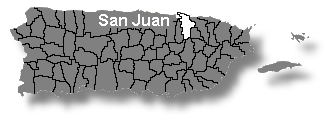 Puerto Rico boasts an extraordinary and diverse geography, combining mountains, tropical forests, fertile valleys, world-renowned beaches, wetlands, rivers, reefs, and unique ecosystems. Its strategic location between the Atlantic Ocean and the Caribbean Sea provides exceptional landscapes and a tropical climate with high biodiversity.
Puerto Rico boasts an extraordinary and diverse geography, combining mountains, tropical forests, fertile valleys, world-renowned beaches, wetlands, rivers, reefs, and unique ecosystems. Its strategic location between the Atlantic Ocean and the Caribbean Sea provides exceptional landscapes and a tropical climate with high biodiversity.
Mountains and Central Region
The Cordillera Central runs through the heart of the island from east to west, forming the backbone of Puerto Rico’s terrain. Among its most notable peaks are:
- Cerro de Punta (Jayuya):
Puerto Rico’s highest point at 1,338 meters (4,390 ft), ideal for ecotourism and nature observation. - Monte Guilarte and Monte Jayuya:
Forested landscapes, coffee plantations, and endemic biodiversity.
This mountainous region creates microclimates suitable for growing coffee, tropical fruits, and a wide variety of flora, including giant ferns and mountain palms. Rivers, streams, and fertile valleys make this area both an ecological and economic cornerstone.
Tropical Forests and Protected Areas
Puerto Rico is home to internationally recognized protected forests, including:
El Yunque National Forest
- The only tropical rainforest in the U.S. National Forest System
- UNESCO-recognized
- Home to over 240 tree and plant species
- Habitat for the Puerto Rican coquí, endemic birds, tropical butterflies, and iconic waterfalls
Other important forests:
- Guánica Dry Forest:
A biosphere reserve with species adapted to arid climates - Toro Negro State Forest:
Natural lakes, hiking trails, and conservation areas - Carite State Forest:
Crucial for migratory birds and biodiversity
Coasts, Beaches, and Reefs
With over 500 km (310 miles) of coastline, the island offers coastal landscapes for every preference:
- White sand beaches with turquoise waters such as Flamenco (Culebra), Luquillo, and Buyé (Cabo Rojo)
- Cliffs and surfing areas in the north and west, such as Isabela and Rincón
- Mangroves and coral reefs that protect marine life and reduce the impact of storms and hurricanes
Sea turtles, tropical fish, and corals make Puerto Rico a paradise for diving and snorkeling.
Bioluminescent Bays
Puerto Rico is one of the few places in the world with three bioluminescent bays:
- Mosquito Bay (Vieques): Considered the brightest in the world
- Laguna Grande (Fajardo)
- La Parguera (Lajas)
These bays are inhabited by dinoflagellates that emit a bluish light when the water is disturbed, creating a unique natural phenomenon ideal for responsible ecotourism.
Rivers, Lakes, and Wetlands
The Puerto Rican archipelago includes:
- Vieques and Culebra: Pristine beaches, wildlife refuges, and protected marine ecosystems
- Isla de Mona, Desecheo, Caja de Muertos, Icacos: Natural wealth important for conservation and scientific research
These smaller islands are essential for biodiversity and ecological tourism.
Climate and Microclimates
Puerto Rico has a tropical maritime climate, with temperatures remaining warm throughout the year.
Average Temperatures:
- Winter: 22–24 °C (72–75 °F)
- Summer: 28–31 °C (82–88 °F)
Seasons::
- Rainy and Hurricane Season: June to November
- Dry and Cooler Season: December to May
Sea breezes moderate coastal areas, while mountainous regions can experience significantly cooler temperatures.
Natural Resources and Conservation
Puerto Rico is home to unique flora and fauna, including emblematic species such as:
- Puerto Rican coquí
- Green iguana
- Puerto Rican parrot
- Puerto Rican woodpecker
National parks, nature reserves, and local community initiatives support conservation and sustainable tourism, helping to protect the island’s environmental wealth.
Size and Population
Geographical Dimensions
Puerto Rico is a relatively compact island, measuring approximately 100 miles long by 35 miles wide (160 km × 56 km), with a total area of 8,870 km². Despite its modest size, the island contains a remarkable variety of ecosystems and landscapes, including:
- Rainforests, such as El Yunque National Forest, featuring waterfalls, rivers, and endemic species.
- Cave systems, particularly in Arecibo and Camuy, known for their caverns and geological formations.
- Coral reefs in Vieques, Culebra, and La Parguera, supporting a wide diversity of marine life.
- Dry forests and mangroves, mainly in the south and east, which play a vital role in coastal protection and local wildlife.
The climate ranges from humid tropical in coastal areas to subtropical in the mountains, creating microclimates that support biodiversity, enable varied crops, and sustain unique species of flora and fauna.
Current Population
According to 2022 U.S. Census estimates, Puerto Rico has a population of 3,285,874 inhabitants.
By 2025, the estimated population is around 3,235,000 residents, reflecting a declining trend due to migration to the mainland United States and decreasing birth rates.
Major cities and urban centers:
- San Juan – the capital and main economic and urban center
- Ponce – cultural and historical center of the south
- Mayagüez – a university and port city
- Arecibo – known for its observatory (until its collapse in 2020) and beaches
Population Density and Distribution
Puerto Rico is one of the most densely populated areas in the Caribbean, with an approximate density of 365 inhabitants per km².
Population distribution patterns:
- High concentration along the northern and eastern coastal strip, especially in San Juan, Bayamón, Carolina, and Guaynabo
- Lower density in the Central Mountain Range and rural interior areas
- Urban centers with greater infrastructure, services, job opportunities, and economic activity
- Rural regions that maintain a quieter lifestyle closely connected to nature
Migration and Demographic Trends
In recent years, Puerto Rico has experienced significant migration to U.S. cities such as:
- Orlando and Tampa (Florida)
- New York and New Jersey
- Philadelphia and Chicago
Main factors:
- Search for employment and professional development
- Access to housing and education
- Recovery after natural disasters such as Hurricanes Irma and María (2017) and Fiona (2022)
This has resulted in:
- Reduction of the resident population
- Growth in the Puerto Rican diaspora
- Changes in age structure (population aging)
Despite these challenges, Puerto Rican identity remains strong and vibrant, both on the island and in the diaspora.
A Small Territory with a Big Impact
Although modest in size, Puerto Rico brings together:
- Diverse geography and ecosystems of high environmental value
- Population concentrated in strategic urban areas
- Continuous demographic and social transformations
The island faces the challenge of fostering sustainable economic development, protecting its natural resources, and strengthening its cultural heritage, remaining a key territory of the Caribbean and a meeting point of history, innovation, and tradition.
Municipalities of Puerto Rico: Population Information
Puerto Rico is organized into 78 municipalities, each with its own local government led by a mayor and a municipal legislature. Although they function similarly to counties in the United States, each one has its own cultural identity, traditions, cuisine, and natural attractions, making the island a diverse and dynamic mosaic
Directory of Municipalities
The following directory includes all 78 municipalities, from the urban centers of the metropolitan area to rural, mountainous, and coastal communities.
Population by Municipality
The population of each municipality varies considerably depending on its level of development, economic activity, and location. Metropolitan areas concentrate the largest number of residents, while mountainous regions and the island municipalities tend to have lower population densities and more relaxed lifestyles.
To view the current population of each municipality, you can consult the complete and updated list here.
Identity and Value of the Municipalities
Each municipality contributes something unique to Puerto Rico’s identity, whether through its cultural heritage, cuisine, natural resources, history, or economic development.
From vibrant urban areas to peaceful rural environments, the municipalities reflect the diversity and richness that make Puerto Rico a unique territory in the Caribbean, offering cultural, natural, and social experiences for all visitors and residents.
Civic Information and Government
Citizenship and Language
Puerto Ricans have been U.S. citizens since the approval of the Jones–Shafroth Act in 1917, which grants them freedom of movement between Puerto Rico and any U.S. state without the need for a passport. However, as an unincorporated territory, residents cannot vote in presidential elections unless they move to one of the 50 states or the District of Columbia. The island also does not have voting representation in Congress; instead, it elects a Resident Commissioner, who may participate in committees of the U.S. House of Representatives but does not have full voting rights.
Puerto Rico is officially bilingual, with Spanish and English as its official languages. Spanish dominates daily life, public education, local government, and media, while English is widely used in judicial matters, commerce, tourism, and federal agencies. This linguistic dynamic reflects the cultural blend that defines the island and its unique identity.
U.S. citizens can travel between Puerto Rico and the states without a passport, while international visitors must comply with the same federal entry requirements that apply to the rest of the United States.
Government and Political Status
Puerto Rico has operated as a Commonwealth (Estado Libre Asociado, or ELA) since 1952, with an internal democratic system similar to that of a U.S. state:
- Executive Branch: led by a governor elected every four years.
- Legislative Branch: composed of a Senate and a House of Representatives.
- Judicial Branch: headed by the Supreme Court of Puerto Rico and lower courts.
Despite its internal autonomy, Puerto Rico remains under the authority of the U.S. Congress under the Territorial Clause of the Constitution. This allows Congress to pass laws that affect the island, even without full representation for its residents. In Congress, Puerto Rico is represented by a Resident Commissioner, who has limited participation and no final voting power on the House floor, and the island has no representation in the U.S. Senate.
Debate on Political Status
Puerto Rico’s political status has been the subject of debate for decades, with three main alternatives:
- Statehood: becoming the 51st U.S. state, granting full representation in Congress and the right to vote in presidential elections.
- Independence or Free Association: becoming a sovereign nation, either fully independent or associated with the U.S. through negotiated agreements.
- Continuation or modification of the Commonwealth: maintaining the current level of autonomy, with adjustments depending on local political proposals.
In the most recent referendum in 2020, a simple majority voted in favor of statehood. However, any formal change requires action from the U.S. Congress, which has not yet made a final decision. The debate about status continues to shape local politics and Puerto Rico’s relationship with the federal government.
People and Identity
Puerto Ricans, proudly known as Boricuas, carry an identity deeply rooted in their Taíno, African, and Spanish heritage. The term Boricua comes from Borikén or Borinquen, the Taíno name for the island, and remains a powerful symbol of heritage, pride, and cultural continuity. Puerto Rican identity is a vibrant mosaic that has evolved over more than 500 years, blending Indigenous, African, and European elements with modern U.S. influences—without losing its unique essence.
A Culture Defined by Pride and Community
Life in Puerto Rico is shaped by a strong sense of community and hospitality. Local celebrations — including the San Sebastián Street Festival, Constitution Day, patron saint festivals, and numerous municipal carnivals — reflect the island’s energy, creativity, and tradition. These events bring together families, friends, and visitors to celebrate the music, art, food, and history that make Puerto Rico unique.
Family at the Heart of Boricua Identity
Family is the core of Puerto Rican culture. It is common for extended families to maintain close bonds, gather frequently, and live near one another. Food plays a central role in these connections: dishes such as mofongo, lechón asado, arroz con gandules, pasteles, alcapurrias, and tembleque not only represent tradition but also connect generations through shared, inherited flavors.
Resilience and an Unbreakable Spirit
Resilience is a defining feature of Puerto Rican identity. Despite natural disasters such as Hurricanes María (2017) and Fiona (2022), as well as economic challenges, Boricuas have shown extraordinary strength in rebuilding, adapting, and keeping their culture alive. This resilience also extends to the Puerto Rican diaspora — especially in cities like New York, Orlando, Chicago, and Philadelphia — where millions continue to preserve and celebrate their traditions.
Contributions to Culture and the World
Puerto Rico’s influence reaches far beyond its shores. Puerto Rican artists, athletes, writers, and public figures have made a significant impact on global culture.
Some examples include:
- Music: Ricky Martin, Daddy Yankee, Bad Bunny, Marc Anthony (of Puerto Rican descent).
- Sports: Roberto Clemente, Carlos Arroyo, Mónica Puig, Javier Culson.
- Culture and entertainment: Lin-Manuel Miranda, Rita Moreno, Benicio del Toro.
- Literature and thought: Julia de Burgos, Luis Rafael Sánchez, Esmeralda Santiago.
Their collective legacy highlights the creativity, talent, and determination that define the Puerto Rican people.
Puerto Rico Municipalities: Population Insights
Puerto Rico is divided into 78 municipalities, each with its own unique local government led by a mayor and municipal legislature. These municipalities function much like counties in the U.S., offering a rich diversity of experiences, culture, and history. From urban hubs to rural towns and coastal escapes, each municipality contributes to the vibrant mosaic of Puerto Rico’s identity.
Explore detailed population insights, demographics, and key facts for every municipality to better understand the island’s social and cultural landscape. Learn more about Puerto Rico’s towns, their unique characteristics, and the role they play in the island’s economy, tourism, and public services.
Discover More: Puerto Rico Municipalities: Population Insights
Flag of Puerto Rico
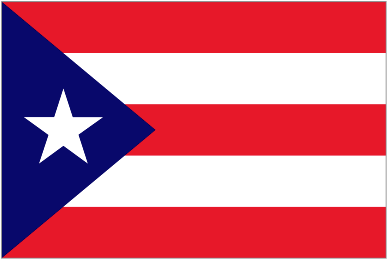 Created in 1895 by Puerto Ricans exiled in New York, inspired by the Cuban flag and adopted by the Puerto Rican Revolutionary Committee, the flag was born as a symbol of the struggle against Spanish colonial rule. Its first public appearance during the Intentona de Yauco in 1897 marked a pivotal moment in Puerto Rico’s history of resistance.
Created in 1895 by Puerto Ricans exiled in New York, inspired by the Cuban flag and adopted by the Puerto Rican Revolutionary Committee, the flag was born as a symbol of the struggle against Spanish colonial rule. Its first public appearance during the Intentona de Yauco in 1897 marked a pivotal moment in Puerto Rico’s history of resistance.
For decades, displaying the flag was an act of courage. Between 1898 and 1952, under U.S. rule, its public use was prohibited, and carrying the flag could lead to arrest. This repression further strengthened its emotional significance — it became a symbol of silent resistance, national dignity, and cultural pride.
In 1952, with the establishment of the Commonwealth of Puerto Rico (Estado Libre Asociado), the flag was officially adopted, although its meaning as an emblem of Puerto Rican identity has always transcended political status.
Modern Symbolism
Today, the flag is a constant presence in the lives of Boricuas: it flies over homes, festivals, schools, protests, and celebrations both on the island and throughout the diaspora, especially in cities like New York, Orlando, Chicago, and Hartford.
Each element of the flag carries deep meaning:
- Red stripes: Sacrifice, bravery, and the strength of the people.
- White stripes: Peace, dignity, and the aspiration for a just future.
- Blue triangle: Government, structure, and social order.
- White star: Puerto Rico — its culture, its people, and its unending spirit.
Today, the flag is also a powerful symbol of unity and civic resistance. During the summer of 2019, the image of the flag was seen worldwide during the protests that led to the resignation of the governor. That moment reaffirmed that, more than a political symbol, the flag is a reminder of the power of the Puerto Rican people when united with purpose.
Coat of Arms
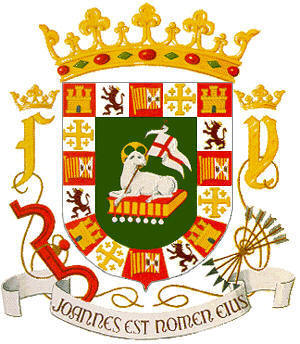 The coat of arms of Puerto Rico features a distinctive design with a central green field from which seven red ribbons emerge, each bearing silver seals. At the center, a lamb — symbolizing Jesus Christ — holds a white flag with a red cross and is topped by a weather vane. At the top of the shield is the inscription “Joannes est nomen eius” (“John is his name”), a reference to Saint John the Baptist, the island’s patron saint.
The coat of arms of Puerto Rico features a distinctive design with a central green field from which seven red ribbons emerge, each bearing silver seals. At the center, a lamb — symbolizing Jesus Christ — holds a white flag with a red cross and is topped by a weather vane. At the top of the shield is the inscription “Joannes est nomen eius” (“John is his name”), a reference to Saint John the Baptist, the island’s patron saint.
Surrounding the shield are 16 alternating squares with castles, lions, flags, and crosses — symbols of the Kingdom of Castile and León and the Kingdom of Jerusalem. On each side of the shield are the letters “F” and “Y,” accompanied by crowns, a yoke, and arrows:
- F represents King Ferdinand
- Y represents Queen Isabella of Castile
- The yoke and arrows symbolize the union of kingdoms and the conquest of the West Indies
At the top, a crown symbolizes the sovereignty granted by the Spanish monarchy.
Meaning of the Elements
- Green: Fertility of the land
- Lamb: Jesus Christ and the Catholic faith
- White flag: Peace
- Book: The Gospel
- Letters “F” and “Y”: King Ferdinand and Queen Isabella
- Yoke: Power of Castile
- Arrows: Strength and conquest
- Crown: Spanish sovereignty
- “John is his name” inscription: Baptism of the island as San Juan Bautista
- Lions, castles, crosses, and flags: Spanish governance over Puerto Rico
The coat of arms reflects the island’s history, faith, and Hispanic heritage, blending religious, monarchical, and governmental symbols that tell the story of its origins and legacy.
National Anthem of Puerto Rico — “La Borinqueña”
“La Borinqueña” is one of the most beloved and recognizable symbols of the Puerto Rican spirit. Its history, deeply tied to national identity, blends European musical roots, Boricua creativity, and key moments in the people’s struggle for self-determination.
The melody originated in 1867 as a dance composed by Catalan musician Félix Astol Artés, although popular tradition also credits Puerto Rican composer Francisco Ramírez Ortíz. Its inspiration comes from the siguiriya, an Andalusian musical form, but over time the piece evolved into a cultural emblem of Puerto Rico.
In 1868, after the historic Grito de Lares, Puerto Rican poet Lola Rodríguez de Tió wrote a revolutionary version of the lyrics that expressed the longing for freedom and independence. These verses, filled with patriotic sentiment, became a symbol of resistance during one of Puerto Rico’s most important historical periods.
At the beginning of the 20th century, in 1901, journalist and writer Manuel Fernández Juncos created a new version of the lyrics — this time more lyrical, solemn, and patriotic — highlighting the beauty of the island and the pride of being Puerto Rican. This is the version officially recognized today.
The orchestral adaptation we hear today was arranged by Ramón Collado in 1952, the year Puerto Rico adopted its Constitution. The anthem was performed officially for the first time on July 25, 1952, becoming from that day forward a solemn representation of the national spirit.
Today, “La Borinqueña” is a symbol of unity, identity, and love for the homeland. It is performed at official ceremonies, international sporting events, schools, cultural gatherings, and civic moments that celebrate Puerto Rico’s essence. Although an English translation exists, the Spanish version remains the official and preferred one.
Its music and lyrics evoke the pride of a resilient, joyful island deeply rooted in its history.
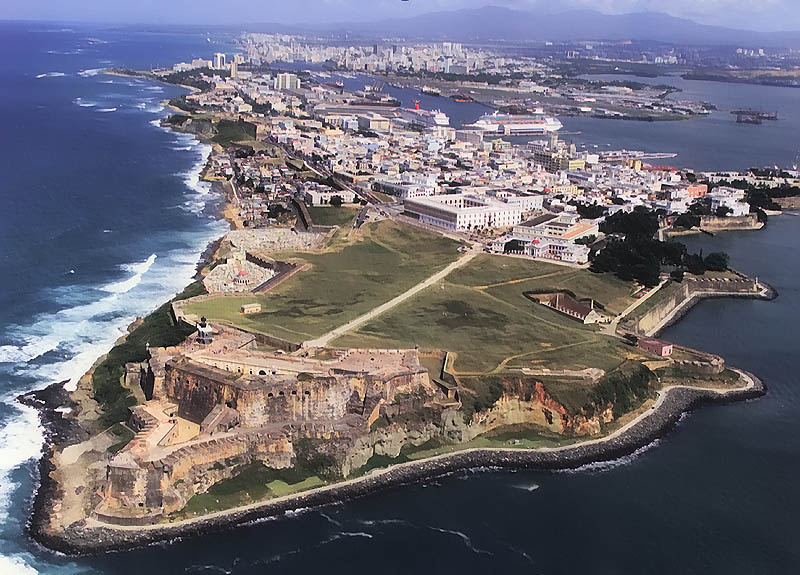
La Borinqueña
La tierra de Borinquen
donde he nacido yo.
Es un jardín florido
de mágico esplendor.
Un cielo siempre nítido
le sirve de dosel.
Y dan arrullos plácidos
las olas a sus pies.
Cuando a sus playas llego Colón,
exclamó lleno de admiración:
Oh! Oh! Oh!
Esta es la linda
tierra, que busco yo.
Es Borinquen la hija,
la hija del Mar y el sol.
del Mar y el Sol,
del Mar y el Sol,
del Mar y el Sol,
del Mar y el Sol!
HIDDEN Beaches of Puerto Rico
Beaches of Puerto Rico
Coasts of Puerto Rico

Puerto Rico has long been celebrated as a premier tourist destination, attracting millions of visitors each year eager to experience its breathtaking landscapes and vibrant culture. Among the island's most remarkable features are its stunning beaches, often hailed as some of the most beautiful in the world. With over 270 miles of coastline, Puerto Rico is home to nearly 300 diverse beaches, each offering unique experiences and picturesque views.
Whether you’re looking for a warm retreat from winter’s chill or a place to create unforgettable memories, Puerto Rico is the perfect destination. Relax under the sun, ride the waves, or dive into the vibrant underwater world—there’s a beach to suit every preference.
For a closer look at the unique charm of each region, explore the Beaches by Coast section below.
HIDDEN Beaches of Puerto Rico
HIDDEN - Historic Sites and Landmarks
Historic Sites and Landmarks in Puerto Rico
A Glimpse into the Island's History and Culture

Puerto Rico is an island of extraordinary beauty and deep historical significance. With a heritage that spans centuries, it boasts a wealth of historical sites and monuments that tell the story of its vibrant past. From breathtaking landscapes to charming towns rich in culture, Puerto Rico is a destination like no other.
Explore the island and its smaller neighboring gems through unforgettable sightseeing tours that highlight both historical landmarks and natural wonders. The island’s awe-inspiring scenery creates the perfect setting for outdoor adventures, blending history and nature in a way few places can match.
Whether you’re a history enthusiast, a nature lover, or simply curious about the island’s unique charm, Puerto Rico promises an unforgettable experience. Here are just a few of the iconic historical sites and landmarks that await your discovery:
Popular Historical Sites and Landmarks in Puerto Rico
HIDDEN - Museums in Puerto Rico
Museums in Puerto Rico
A Tour of the Art Museums

Puerto Rico, a charming Caribbean island, captivates not only with its paradisiacal beaches and lush nature but also with its rich history and vibrant art scene. With nearly 80 museums spread across the island, it offers a fascinating variety of exhibits showcasing Puerto Rican art alongside global artistic expressions.
The island is a unique cultural destination, inviting exploration of a wide range of museums, from contemporary art and design to local history and traditions. No matter your interests, Puerto Rico has something special to offer every visitor.
Here are some of the most popular museums in Puerto Rico:
Museums in Puerto Rico
HIDDEN Puerto Rico Food Trails
Puerto Rico Food Trails and Culinary Adventures
Exploring Puerto Rico's Culinary Scene

Puerto Rico is a culinary treasure, celebrated for its rich and diverse cuisine that reflects the island’s vibrant heritage. From beloved traditional dishes like mofongo and pastelón to modern twists on Caribbean flavors, there’s a delightful experience for every palate.
The island’s gastronomic routes provide an exciting way to explore this dynamic cuisine while immersing yourself in Puerto Rican culture and lifestyle. One must-try experience is the local tradition of "chinchorreo," where you hop from bar to bar and restaurant to restaurant, savoring refreshing drinks, mouthwatering food, and perhaps even enjoying some lively dancing. It’s a joyous and festive way to indulge in Puerto Rico’s culinary delights.
For those seeking unforgettable culinary adventures, Puerto Rico offers several gastronomic trails that promise a feast for the senses. Here are some of the most popular routes:
Puerto Rico Food Trails and Culinary Adventures
HIDDEN - Puerto Rican Cuisine and Drinks
Puerto Rican Cuisine and Drinks
Exploring the Flavors and Traditions of the Island’s Culinary Heritage

Puerto Rican cuisine blends Spanish, African, and Taino influences, resulting in a variety of bold and flavorful dishes. Staples like rice and beans, plantains, and pork are seasoned with garlic, adobo, and spices. Dishes such as mofongo (mashed plantains with meat) and arroz con gandules (rice with pigeon peas) showcase the island's love for hearty meals. Puerto Rican seafood, including bacalao guisado (salted cod stew), reflects the island's coastal geography.
Puerto Rican drinks are just as diverse, with rum at the heart of many classic cocktails like the piña colada. Non-alcoholic beverages such as coconut water and fresh fruit juices offer a refreshing taste of the tropics. These culinary delights embody Puerto Rico's cultural fusion, making the island's food and drinks a must-try experience.
For those eager to explore the finest of Puerto Rican cuisine, the island offers a vibrant mix of bold flavors and cultural traditions. Here are some of the most popular dishes and drinks:
Puerto Rican Cuisine and Drinks
No post found
HIDDEN Annual Festivals in Puerto Rico
Annual Festivals in Puerto Rico
Puerto Rico, an Island of Festivals

Puerto Rico is a vibrant island brimming with culture and tradition, and its annual festivals celebrate everything that makes this destination unique. From religious observances to food and cultural celebrations, there is something for everyone to enjoy in Puerto Rico.
These festivals offer a wide array of activities and attractions to suit all tastes. Whether you’re passionate about music, food, art, or history, you are sure to find a festival in Puerto Rico that captures your interest.
Annual Festivals in Puerto Rico
HIDDEN Music in Puerto Rico
Music in Puerto Rico
The Rhythmic Tapestry of Puerto Rican Music

Music in Puerto Rico is a powerful medium of cultural expression and storytelling, bridging generations and uniting communities. It embodies the island’s spirit, celebrating its history, struggles, and triumphs. The vibrant rhythms of Puerto Rican music not only captivate local audiences but also resonate globally, showcasing the island’s rich cultural heritage and diversity.
Nestled in the heart of the Caribbean, Puerto Rico is renowned not only for its stunning landscapes but also for its profound musical legacy. The island’s music is a unique blend of influences, reflecting its complex history and cultural tapestry. From the soulful melodies of salsa to the infectious beats of reggaeton, Puerto Rican music has played a pivotal role in shaping the global music scene.
The Vibrant Genres of Puerto Rican Music
Puerto Rican music spans a variety of genres, each with its own rich history and cultural significance. Here are some of the key styles that define the island’s dynamic musical landscape:
Puerto Rican Music Guide


